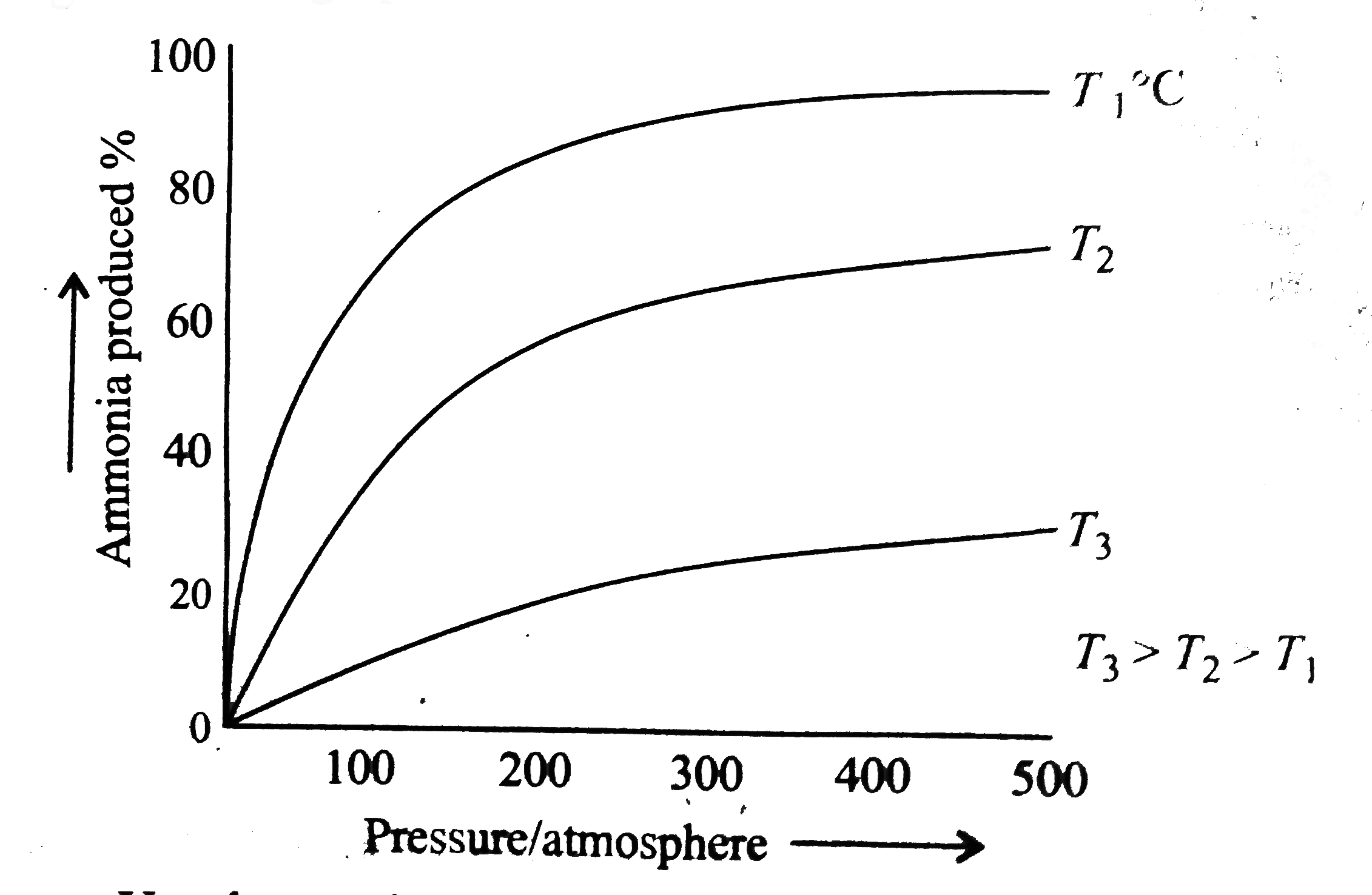The process by which ammonia is formed from nitrogen and hydrogen is
Contact process
Haber process
Ostwald process
Hydrogenation process
The correct Answer is:B
To solve the question regarding the process by which ammonia is formed from nitrogen and hydrogen, we can follow these steps:
1. Identify the Reaction: The formation of ammonia (NH₃) from nitrogen (N₂) and hydrogen (H₂) can be represented by the chemical equation:
N2+3H2→2NH3
2. Determine the Process: The process that facilitates this reaction is known as the Haber process. This process synthesizes ammonia from its elemental gases under specific conditions.
3. Conditions of the Haber Process:
- Temperature: The reaction typically occurs at a temperature of about 673 Kelvin.
- Pressure: The reaction is conducted at high pressures, around 200 atmospheres.
- Catalyst: Iron is commonly used as a catalyst to speed up the reaction, and molybdenum can be used as a promoter to enhance the effectiveness of the catalyst.
4. Evaluate the Options:
- Contact Process: This is used for the production of sulfuric acid (H₂SO₄), not ammonia.
- Haber Process: This is the correct process for the formation of ammonia.
- Ostwald Process: This is used for the production of nitric acid (HNO₃), not ammonia.
- Hydrogenation Process: This involves the addition of hydrogen to unsaturated compounds to form saturated compounds, which is not relevant to ammonia synthesis.
5. Conclusion: Based on the evaluation of the options, the correct answer is the Haber process.
Final Answer:
The process by which ammonia is formed from nitrogen and hydrogen is known as the Haber process.
---
N2+3H2→2NH3
- Temperature: The reaction typically occurs at a temperature of about 673 Kelvin.
- Pressure: The reaction is conducted at high pressures, around 200 atmospheres.
- Catalyst: Iron is commonly used as a catalyst to speed up the reaction, and molybdenum can be used as a promoter to enhance the effectiveness of the catalyst.
- Contact Process: This is used for the production of sulfuric acid (H₂SO₄), not ammonia.
- Haber Process: This is the correct process for the formation of ammonia.
- Ostwald Process: This is used for the production of nitric acid (HNO₃), not ammonia.
- Hydrogenation Process: This involves the addition of hydrogen to unsaturated compounds to form saturated compounds, which is not relevant to ammonia synthesis.
The process by which ammonia is formed from nitrogen and hydrogen is known as the Haber process.
Topper's Solved these Questions
- HYDROGENBOOK - AAKASH INSTITUTE ENGLISHCHAPTER - HYDROGENEXERCISE - ASSIGNMENT (SECTION - B) (objective type question)
38 Videos
- HYDROGENBOOK - AAKASH INSTITUTE ENGLISHCHAPTER - HYDROGENEXERCISE - ASSIGNMENT (SECTION - C) (Previous type questions)
26 Videos
- HYDROGENBOOK - AAKASH INSTITUTE ENGLISHCHAPTER - HYDROGENEXERCISE - EXERCISE
10 Videos
- HYDROCARBONSBOOK - AAKASH INSTITUTE ENGLISHCHAPTER - HYDROCARBONSEXERCISE - Assignment(Section - C) (Previous Years Questions)
60 Videos
- M0ck test 26BOOK - AAKASH INSTITUTE ENGLISHCHAPTER - M0ck test 26EXERCISE - EXAMPLE
43 Videos
Similar Questions
How is Ammonia separated from unreacted Nitrogen and Hydrogen ?
View SolutionThe persentage of ammonia produced from nitrogen and hydrogen under conditions of temperature and pressure is given in the graph

Use the graph answering the following questions:
What happens to the percentage of ammonia produced when the temperature is increased
View SolutionThe persentage of ammonia produced from nitrogen and hydrogen under conditions of temperature and pressure is given in the graph

Use the graph answering the following questions:
What conditions of pressure produce the highest percentage of ammonia?
View SolutionThe persentage of ammonia produced from nitrogen and hydrogen under conditions of temperature and pressure is given in the graph

Use the graph answering the following questions:
What happens to the percentage of ammonia produced when the pressure is increased?
View SolutionIn the industrial preparation of ammonia by Haber process from nitrogen and hydrogen, the reaction is carried in the temperature range of 450∘C to 500∘C and in a pressure range of 200 atm to 300 atm. Now answer the following question.
How is ammonia separated from unreacted nitrogen and hydrogen?
View SolutionOne volume of nitrogen reacts with 3 volumes of hydrogen to produce two volumes of ammonia gas. How much nitroget? and hydrogen gas is required to produce 400cm3 of ammonia gas ?
View SolutionIn the preparation of ammonia in industry, the raw materials are nitrogen and hydrogen. These are mixed together in the correct proportions needed to form ammonia.
Write the balanced equation for the manufacture of ammonia.
View SolutionIn the preparation of ammonia in industry, the raw materials are nitrogen and hydrogen. These are mixed together in the correct proportions needed to form ammonia.
How would the volume of ammonia formed compare with the volume of the original mixture?
View SolutionIndustrially, ammonia is obtained by direct combination between nitrogen and hydrogen.
Write the balanced chemical equation for the direct combination of nitrogen with hydrogen.
View SolutionIndustrially, ammonia is obtained by direct combination between nitrogen and hydrogen.
Is the formation of ammonia promoted by the use of high pressure or low pressure?
View Solution
